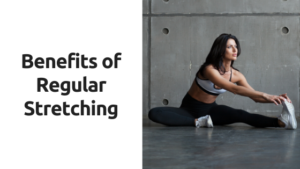
While many people may associate stretching with their workouts, loosening up before or cooling down after, it’s actually a very beneficial practice to get into every single day regardless of your workout routine. Whether it’s first thing in the morning, every hour or two throughout your day, or winding down before bed, taking a few minutes to stretch and release the tension in your muscles can help you to move and feel better.
Stretching Improves Local Blood Circulation
When you stretch, you’re opening up areas of tension that may have contributed to decreased circulation of blood and lymph to certain areas of the body. Opening these areas helps oxygen and nutrients to get to every cell as needed, leaving your body functioning better overall.
Stretching Can Boost Energy
Getting your blood flowing, through exercise or simply moving and stretching your body after sitting for a while, can give you the perfect little pick-me-up when you’ve hit your mid-day energy lull. Feeling sluggish? Take a few minutes to stretch your arms while at your desk. If you have room, stand for a moment and stretch for just 5 minutes.
Stretching Can Improve Posture
Allowing your body to move and your muscle to elongate can help you to become more body-aware and help to prevent your body from becoming too comfortable and accustomed to poor postural habits. This means you’ll be more aware as you fall into those bad postures and unconsciously bring yourself back up to a better position.
Stretching Can Improve Athletic Performance
When performing dynamic stretching before a workout – a type which includes movement along with your stretches as opposed to static stretching, the kind you simply hold – can improve your performance. It warms up your muscles for the upcoming activity, helping to prevent injury.
Stretching Can Increase Your Range of Motion
When your muscles are tight, it prevents you from getting the full range of motion in your joints. For example, if your hips and legs are tense, it may mean you can’t move your hips as smoothly or as much as you need to. When you stretch regularly, you’re keeping those muscles around the joints loose, allowing them to move as they should.
It’s important to note that when you add stretching into your daily life, be sure to listen to your body. Don’t force a stretch past where it feels comfortable; you don’t want to injure yourself. Also, to get into the habit of daily stretching, try to stretch at the same time every day. You may find that a few minutes in the morning to loosen up after lying down all night is a great start to the day. If you have to stand or sit in a single position most of the day, getting up and stretching every hour or two may be just what you need. And a few minutes of stretching before bed to get rid of the day’s tension and relax is always a great end to the day.

 How many times have you been told in your life to stand up straight, drop your shoulders, or if you don’t stand up straight, you’ll pay for it later? From the time we’re small, we’re often told the “right” way to stand and sit. But what if I told you that everything you’ve heard about having good posture isn’t necessarily true?
How many times have you been told in your life to stand up straight, drop your shoulders, or if you don’t stand up straight, you’ll pay for it later? From the time we’re small, we’re often told the “right” way to stand and sit. But what if I told you that everything you’ve heard about having good posture isn’t necessarily true?